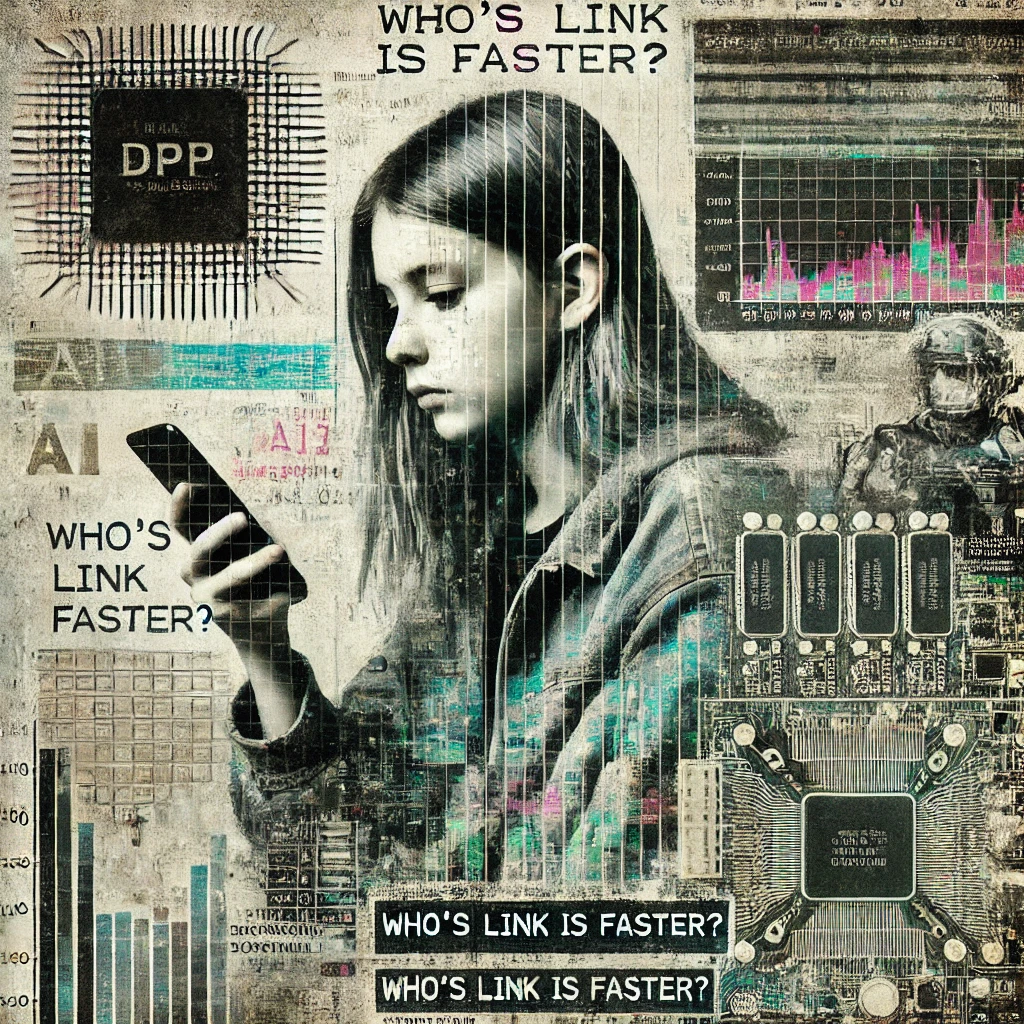In an era where decisions are made at machine speed, AI dictates what we see, and financial networks move wealth faster than regulators can react, the fusion of digital identity and systemic control has never been more absolute. Taiwan Semiconductor Manufacturing Company (TSMC), the world’s largest producer of advanced microchips, plays a critical role in powering AI systems, cryptographic transactions, and the infrastructure of digital security. The increasing reliance on digital verification—where access to money, information, and identity itself is governed by automated systems—ensures that participation in the modern world is no longer just a matter of choice, but of compliance. As the speed of information determines who controls the narrative—who’s link is faster?—we must ask: how do we exist within this accelerating framework?
In digital systems, identity is more than a name—it is a composite of credentials, transactions, and behavioral patterns processed through AI-driven mechanisms. The way individuals are categorized, granted access, or restricted is not unlike how geopolitical negotiations unfold—who has the leverage, who controls the infrastructure, and who dictates the terms. Just as a politician’s status can define the shape of public discourse, the infrastructure behind digital authentication systems defines the boundaries of participation in the modern economy. The laws that govern nations are paralleled by the rules that dictate access to financial networks, digital platforms, and encrypted communications. These systems increasingly rely on algorithmic governance, shifting the question from who is in power to who controls the code.

If political momentum is shaped by legal precedents and international courts, digital momentum is dictated by who writes the algorithms, who owns the pipelines, and whose link is faster. The architecture of these systems does not exist in isolation—social movements, financial transactions, and diplomatic negotiations all take place within them. What is deemed acceptable or enforceable is, in many cases, not determined by deliberate public discourse but by automated policy enforcement, AI-moderated conversations, and selectively promoted narratives. The internet, once envisioned as a decentralized space of open participation, has become a landscape where visibility, speech, and access are dictated by unseen ranking systems, shadow moderation, and economic incentives.

The image of a young girl immersed in digital interaction is more than just a portrait of modern youth—it is a symbol of an entire generation whose identities are formed, shaped, and stored within algorithmic structures. From childhood, digital footprints are accumulated, analyzed, and monetized, long before individuals are conscious of how these systems operate. Unlike previous generations who encountered political structures first through social experience, the new reality is that individuals first encounter systems of power through the interfaces of digital identity—passwords, biometric scans, two-factor authentication, and data-driven verification. If previous power struggles centered on physical territory, today’s conflicts are increasingly about who owns the infrastructure of identity itself.
As transactions, governance, and visibility become increasingly automated, the question of control becomes one of participation. Who dictates the terms of engagement? Who ensures access? Who determines the thresholds of visibility? The acceleration of digital identity is not merely a question of convenience or security—it is a fundamental shift in agency that shapes whether individuals act with autonomy or as predefined variables in a system designed by others. We must recognize that these systems are not neutral, nor are they immutable; they are shaped by choices, policies, and coded frameworks that can either be challenged or accepted. The question remains: how do we exist within this accelerating framework? Do we navigate it, or are we merely data points within it?

Paul Virilio’s concept of dromology—the study of speed and its effects on power—helps frame the accelerating framework of digital identity, governance, and AI control. In a dromocratic system, control does not stem from ownership alone, but from the ability to dictate the pace of decision-making, the flow of transactions, and the transmission of information. Those who operate at the highest speeds—financial algorithms, AI moderators, automated verification systems—hold a structural advantage over those who must process events in real-time.
The challenge, then, is not whether to embrace speed or resist it outright, but how to engage tactically. Dromology teaches us that once acceleration reaches a certain threshold, control becomes abstracted into infrastructure itself. When AI dictates what we see, cryptographic signatures determine where we can transact, and digital identity is a precondition for participation, the question is no longer one of opting in or out—it is about knowing when to move with the system and when to disrupt it.
To navigate this reality, we must develop a new literacy of speed, understanding when to accelerate, when to apply friction, and when to disappear from the system entirely. The demand for instant verification, seamless automation, and predictive governance assumes that all participants are willing actors in a hyper-optimized, data-driven reality. But dromology reminds us that there is power in delay, in obfuscation, in slowing the machine just enough to regain agency.
Virilio warned that every system built for absolute speed is destined for a crash. Perhaps the real question is: will we be passive passengers when it happens, or will we be the ones who decide when and where to hit the brakes? Those who want to extract, destabilize, and manipulate are already fluent in speed. Those who wish to build something lasting often find themselves too slow to act, caught in outdated models of deliberation while the world moves around them.
If we want to change the trajectory, we have to stop thinking like builders and start thinking like disruptors. The key is not just to resist acceleration but to take control of it, to anticipate the chaos before it is unleashed, and to dictate the tempo of engagement rather than always reacting. The disruptors rely on speed to stay ahead, but speed can be turned against them. If their strength lies in their ability to move faster than accountability, then the answer is not to slow down but to be faster, more adaptive, and more strategic in knowing when to accelerate and when to force a slowdown. To resist is to disrupt the disruptors, to cut them off from their own tactics, to impose friction where they expect fluidity, and to take back control of the systems they have hijacked.
This is not a fight that can be won with deliberation alone. The world will not pause for reflection, and those who want to carve a better path must learn to move within the speed of the world as it is. The only way forward is to become as fluent in disruption as those who seek to prevent change. The only way to build is to know when to break, and the only way to create something lasting is to ensure it cannot be outpaced before it even begins. The future belongs to those who master the tempo, those who learn when to move, when to disrupt, and when to force the opposition into a speed they cannot control.

Leave a Reply